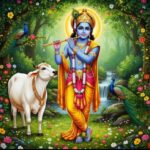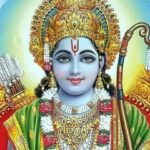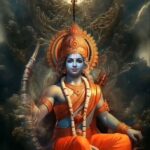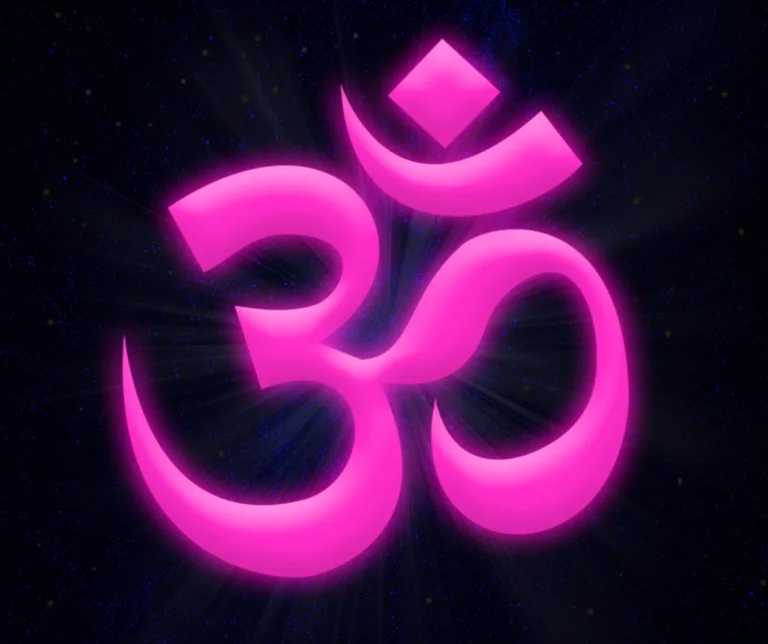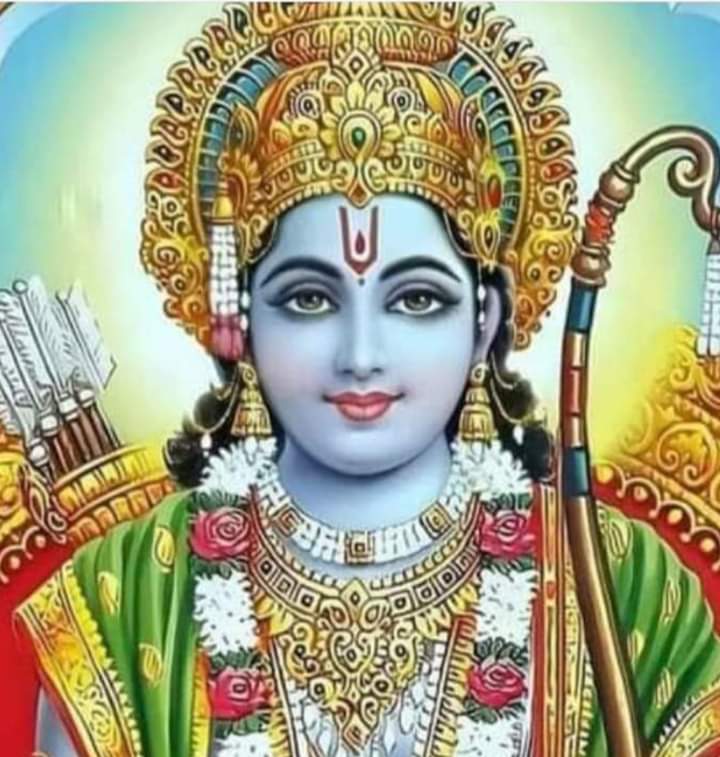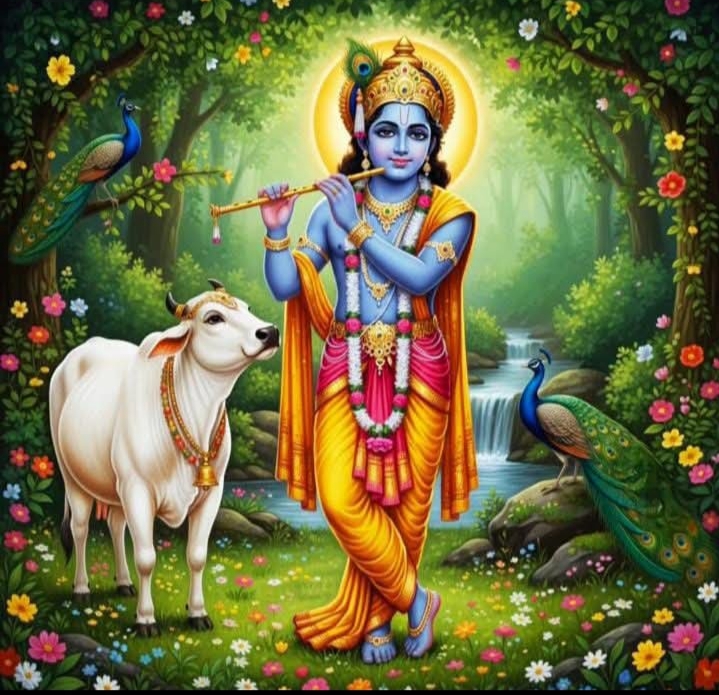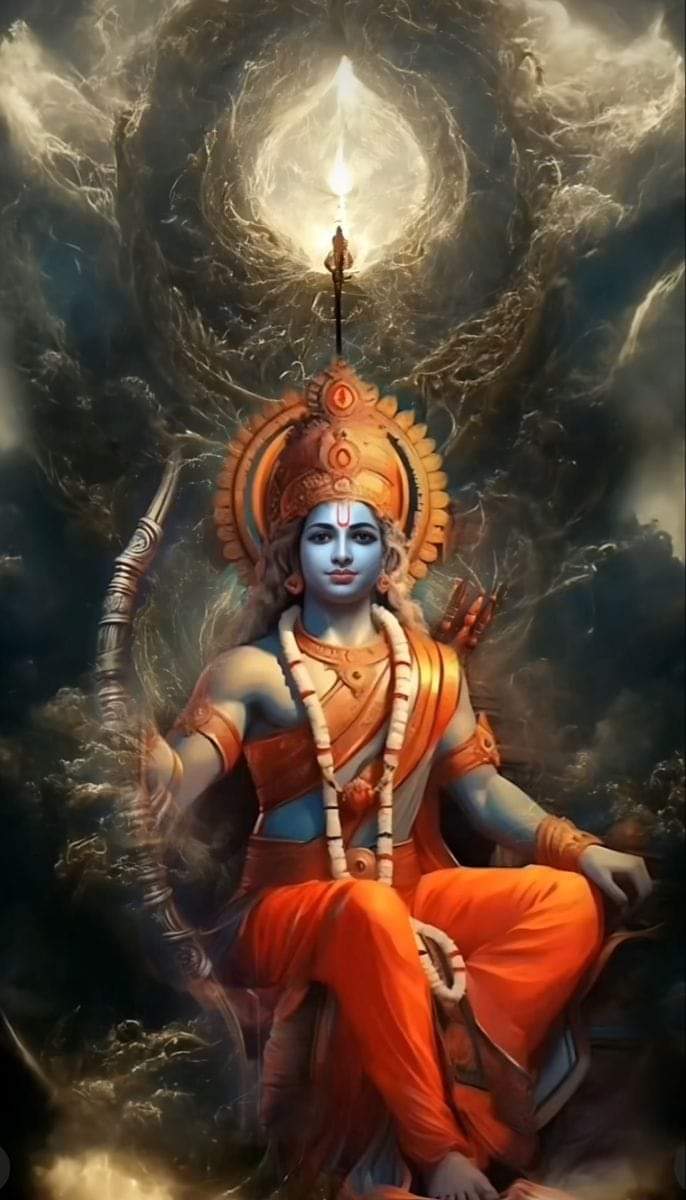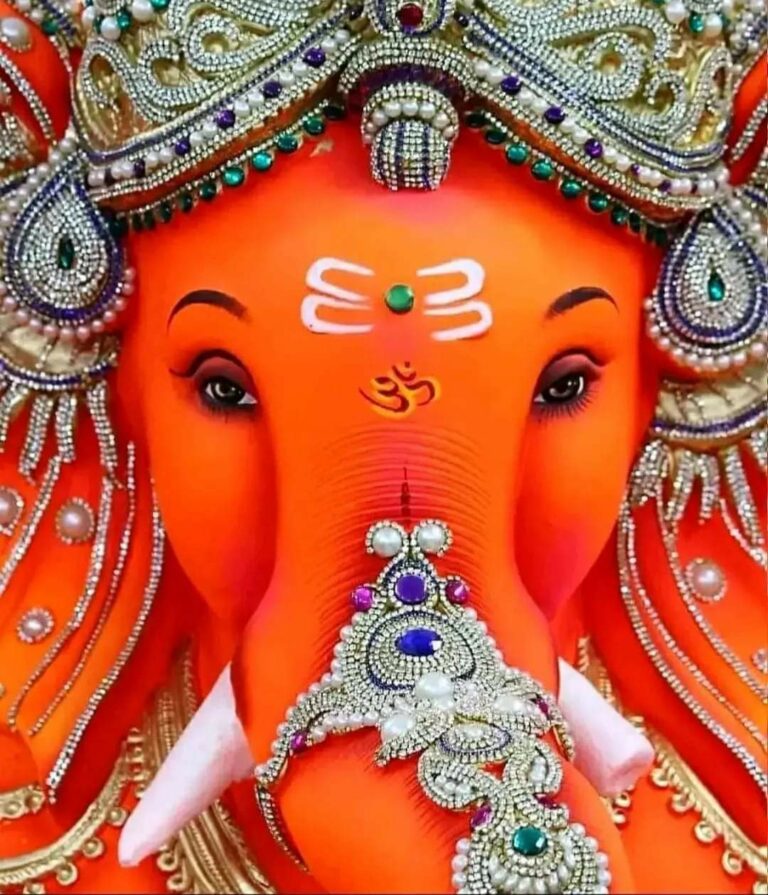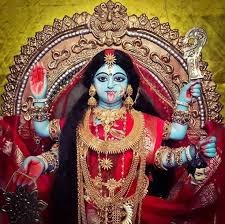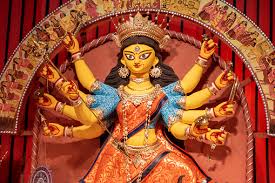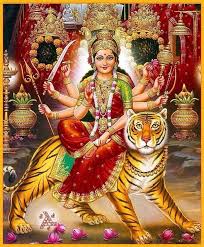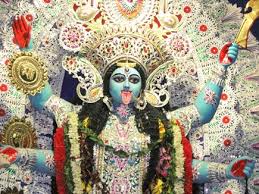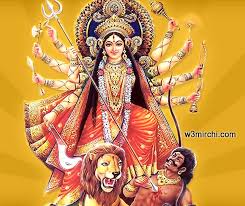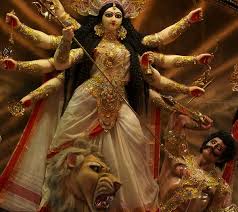पुराणों के अनुसार, ज्ञानवापी की उत्पत्ति तब हुई थी जब धरती पर गंगा नहीं थी और इंसान पानी के लिए बूंद-बूंद तरसता था तब भगवान शिव ने स्वयं अपने अभिषेक के लिए त्रिशूल चलाकर जल निकाला। यही पर भगवान शिव ने माता पार्वती को ज्ञान दिया। इसीलिए, इसका नाम ज्ञानवापी पड़ा और जहां से जल निकला उसे ज्ञानवापी कुंड कहा गया। ज्ञानवापी का उल्लेख हिंदू धर्म के पुराणों मे मिलता है तो फिर ये मस्जिद के साथ नाम कैसे जुड़ गया?
वापी का अर्थ होता है तालाब। #ज्ञानवापी का सम्पूर्ण अर्थ है ज्ञान का तालाब। काशी की छः वापियों का उल्लेख पुराणों मे भी मिलता है।
पहली वापी: ज्येष्ठा वापी, जिसके बारे मे कहा जाता है की ये काशीपुरा मे थी, अब लुप्त हो गई है।
दूसरी वापी: ज्ञानवापी, जो काशी विश्वनाथ मंदिर के उत्तर मे है।
तीसरी वापी: कर्कोटक वापी, जो नागकुंआ के नाम से प्रसिद्ध है।
चौथी वापी: भद्रवापी, जो भद्रकूप मोहल्ले मे है।
पांचवीं वापी: शंखचूड़ा वापी, लुप्त हो गई।
छठी वापी: सिद्ध वापी, जो बाबू बाज़ार मे है और अब लुप्त हो गई।
अठारह (18) पुराणों मे से एक लिंग पुराण मे कहा गया है:
“देवस्य दक्षिणी भागे वापी तिष्ठति शोभना।
तस्यात वोदकं पीत्वा पुनर्जन्म ना विद्यते।”
इसका अर्थ है: प्राचीन विश्ववेश्वर मंदिर के दक्षिण भाग में जो वापी है, उसका पानी पीने से जन्म मरण से मुक्ति मिलती है।
स्कंद पुराण मे कहा गया है: उपास्य संध्यां ज्ञानोदे यत्पापं काल लोपजं |
क्षणेन तद्पाकृत्य ज्ञानवान जायते नरः |
अर्थात इसके जल से संध्यावंदन करने का भी बड़ा फल है, इससे भी ज्ञान उत्पन्न होता है, पाप से मुक्ति मिलती है।
स्कंद पुराण:
योष्टमूर्तिर्महादेवः पुराणे परिपठ्यते ।।
तस्यैषांबुमयी मूर्तिर्ज्ञानदा ज्ञानवापिका।।
अर्थात ज्ञानवापी का जल भगवान
शिव का ही स्वरूप है।
पुराण जो ना जाने कितनी सदियों पहले लिखे गए, उसमें भी ज्ञानवापी को भगवान शिव का स्वरूप बताया गया है। सारे पुराण, कह रहे है की ज्ञानवापी हिंदुओं से जुड़ा हुआ है लेकिन आज 2022 मे आप सुनते है की मस्जिद का नाम है ज्ञानवापी मस्जिद। मुस्लिम आक्रांताओं के आक्रमण से पहले काशी को अविमुक्त और भगवान शिव को अविमुक्तेश्वर कहा जाता था।
काशी मे अविमुक्तेश्वर के स्वयं प्रकट हुए शिवलिंग की पूजा होती थी जिसे आदिलिंग कहा जाता था लेकिन मुस्लिम आक्रांताओं के आक्रमणो ने काशी के मंदिरों को कई बार नष्ट किया।मुहम्मद गोरी ने कुतुबुद्दीन ऐबक को बनारस विजय के लिए भेजा। कुतुबुद्दीन ऐबक के हमले में बनारस के 1000 से भी अधिक मंदिर तोड़े गए और मंदिर की संपत्ति कहा जाता है 1400 ऊंटों पर लादकर मोहम्मद गोरी को भेज दी गई। बाद मे कुतुबुद्दीन को सुल्तान बनाकर, गोरी अपने देश वापिस लौट गया।
कुतुबुद्दीन ऐबक ने बनारस मे शासन के लिए 1197 मे एक अधिकारी नियुक्त किया था।बनारस मे ऐबक के शासन ने बड़ी कड़ाई के साथ मूर्तिपूजा हटाने की पूरी कोशिश की। इसका नतीजा ये हुआ की क्षतिग्रस्त मंदिर वर्षों तक ऐसी ही पड़े रहे क्योंकि इन्होंने ऐसा तोड़ा और ऐसा इनका राज चलता था की किसी की हिम्मत ही नहीं हुई की इन मंदिरों को फिर से बनाए। लेकिन 1296 आते -आते, बनारस के मंदिर फिर से बन गए और फिर से काशी की शोभा बढ़ाने लगे।
बाद मे अलाउद्दीन खिलजी के समय, बनारस के मंदिर फिर से तोड़े गए।फिर 14वी सदी मे तुगलक शासकों के दौर मे जौनपुर और बनारस मे कई मस्जिदो का निर्माण हुआ।कहा जाता है, ये सभी मस्जिदे, मंदिरो के अवशेषों पर बनाई गई थी। 14वी सदी मे जौनपुर मे शर्की सुल्तानो ने पहली बार, काशी विश्वनाथ मंदिर को तुड़वाया। 15वी सदी मे सिकंदर लोदी के समय भी बनारस के सभी मंदिरों को फिर से तोड़ा गया।वर्षों तक मंदिर खंडहर ही बने रहे।
16वीं सदी मे अकबर के शासन मे उनके वित्त मंत्री टोडरमल ने अपने गुरु नारायण भट्ट के आग्रह पर 1585 मे विश्वेश्वर का मंदिर बनवाया जिसके बारे मे कहा जाता है की यही काशी विश्वनाथ का मंदिर है। टोडरमल ने विधिपूर्वक ,विश्वनाथ मंदिर की स्थापना ज्ञानवापी क्षेत्र मे की। इसी ज़माने मे जयपुर के राजा मानसिंह ने बिंदुमाधव का मंदिर बनवाया लेकिन दोनों भव्य मंदिरों को औरंगजेब के शासनकाल मे फिर से तोड़ दिया गया।
1669 मे औरंगजेब ने बनारस के सभी मंदिरों को तोड़ने का फरमान दे दिया था जिसके बाद बनारस मे चार मस्जिदो का निर्माण हुआ जिसमें से तीन उस वक्त के प्रसिद्ध मंदिरों को तोड़कर बनी थी। इसमे विश्वेश्वर मंदिर की जगह जो मस्जिद बनी उसे ज्ञानवापी मस्जिद कहा जाता है ये दावा है लोगों का। दूसरा दावा यह है की बिंदुमाधव मंदिर के स्थान पर धरहरा मस्जिद बनी। फिर है आलमगीर मस्जिद जो कृतिवासेशवर मंदिर की जगह बनाई गई।
📷2: काशी विश्वनाथ मंदिर का 16वी सदी का पुराना नक्शे मे कही भी मस्जिद का कोई भी ज़िक्र नहीं है।बीच मे आप जो हिस्सा देख रहे है वो ज्योतिर्लिंग दिख रहा है।नक्शे को 1820-1830 के बीच ब्रिटिश अधिकारी James Princep ने तैयार किया था।इसमें कहीं भी मस्जिद का ज़िक्र नहीं है। हर जगह, मंदिर बताया गया है और इस नक्शे के मुताबिक मंदिर प्रांगण के चारों कोनो पर तारकेश्वर, मनकेश्वर, गणेश और भैरव मंदिर दिख रहे है। बीच का हिस्सा गृभगृह है जहां शिवलिंग स्थापित है और उसके दोनो तरफ शिव मंदिर भी दिखते है।
📷3+4: ये जो आप लाल border वाला हिस्सा देख रहे है, इसके बारे मे कहा जाता है की ये आज की मस्जिद की boundary है।पुराने नक्शे मे आपको शिवलिंग दिखाया जा रहा है। अब अगर आज की तारीख मे आप जाइएगा, तो शिवलिंग , मस्जिद परिसर के अंदर दिखता है। अब सवाल यह उठता है की नंदी जी मस्जिद की तरफ क्यों देख रहे है जबकि काशी विश्वनाथ मंदिर तो उनके पीछे स्थित है। नंदी जी तो सदैव शिवलिंग की तरफ ही देखते है।
दावा यह भी किया जाता है की जब औरंगजेब ने मंदिर तोड़ने के बाद वहीं पर मस्जिद बनाने का फरमान दिया था तब मंदिर के गृभगृह को ही मस्जिद का मुख्य कक्ष बनाने की योजना बनाई गई थी। इस योजना के अनुसार पश्चिम के दोनों छोटे मंदिर और श्रंगार मंडप तोड़ दिए गए और गृभगृह का मुख्य द्वार जो पश्चिम की तरफ था उसे चुन दिया गया। ऐश्वर्य मंडप और मुक्ति मंडप के मुख्य द्वार बंद कर दिए गये और मंदिर का यही भाग, मस्जिद की पश्चिमी दीवार बन गया।
📷5+6+7: मंदिर की पश्चिमी दीवार को ऐसे ही टूटी सिथति मे इसलिए रख दिया गया क्योंकि औरंगजेब चाहता था की हिन्दू समाज को नीचा महसूस हो। जब मंदिर तोड़ा गया उसके मलबे को भी वहीं पड़े रहने दिया गया। दीवारे ,आज भी वैसी ही है। ज्ञानवापी कुंड का जिक्र, पंचकोसी परिक्रमा मे भी है और मध्यकाल की पुरानी कलाकृतियों मे भी ज्ञानवापी कुंड को मंदिर का हिस्सा दिखाया गया है, जहां जाकर भक्त संकल्प लेते है और संकल्प पूरा होने के बाद फिर से ज्ञानवापी आते है।
ज्ञानवापी मे ,पंडितजी, भक्तों का संकल्प छुड़वाते हुए कहते है :हे, ज्ञानवापी के पीठाधीश्वर, मैं, पंचकौसी परिक्रमा का वाचिक, मानसिक रुप से समर्पित करते हुए, मेरे प्राण छूटे तो आपकी शरण प्राप्त हो।
सारे नक्शे, पंचकौसी परिक्रमा, ज्ञानवापी, सारा ज़िक्र, हिंदुओं के साथ मिलता है।काशी की पंचकौसी परिक्रमा का सनातन धर्म मे बड़ा महत्व है।मान्यता है की 25 कौस के इस क्षेत्र मे 33 कोटि देवताओं का वास है। औरंगजेब के मंदिर तुड़वाने के 125 साल बाद इसका पुनर्निर्माण इंदौर की महारानी अहिल्याबाई ने करवाया था।
1777 मे महारानी अहिल्याबाई ने ज्ञानवापी के बगल मे दोबारा विश्वानाथ मंदिर बनवाया।1828 के आसपास, नेपाल के राजा ने मंदिर परिसर मे नंदी की स्थापना करवाई। इसके बाद, महाराजा रणजीत सिंह ने मंदिर के शिखर को सोने से मढ़वाया था।ये सब अभी वाला जो आप काशीविश्वनाथ मंदिर देखते है, उसके बारे मे बताया जा रहा है।
📷8: एक इतिहास यह भी है की 18वी सदी के दौरान 📷 मराठा सरदार मलहार राव ने काफी कोशिश की थी की ज्ञानवापी मस्जिद की जगह मुस्लिम ,वाजिब मुआवजा लेकर, विश्वनाथ मंदिर फिर बनवा दे लेकिन अंग्रेज, मस्जिद तोड़कर मुस्लिम समाज को नाराज़ नहीं करना चाहते थे।
काशी विश्वनाथ मंदिर और ज्ञानवापी मस्जिद का मामला 1936 मे कोर्ट भी पहुंचा था। तब मुस्लिम पक्ष ने पूरे परिसर को मस्जिद करार करने की अपील भी की थी। 1037 मे वाराणसी ज़िला अदालत ने मुस्लिम पक्ष की अपील को खारिज करते हुए कहा था की ज्ञानकूप के उत्तर मे ही भगवान विश्वनाथ का मंदिर है क्योंकि कोई दूसरा ज्ञानवापी कूप बनारस मे नहीं है।जज ने ये भी लिखा की एक ही विश्वनाथ मंदिर है जो ज्ञानवापी परिसर के अंदर है।
इतिहासकार अनंत सदाशिव अलतेकर ने 1937 मे एक किताब प्रकाशित करते है ‘History Of Banaras’। इसमें भी कहा गया है की मस्जिद के चबूतरे पर स्थित खंबों और नक्काशी को देखने से प्रतीत होता है कि ये 14वी-15वी शताब्दी के है।प्राचीन विश्वनाथ मंदिर मे ज्योतिर्लिंग 100 फीट का था।अरघा भी 100 फीट का बताया गया है। ज्योतिर्लिंग पर गंगाजल, बराबर गिरता रहा है, जिसे पत्थर से ढक दिया गया।यहां, शृंगार-गौरी की पूजा-अर्चना होती है। तहखाना यथावत है, ये खुदाई से सपष्ट हो जाएगा।
विश्वनाथ मंदिर, बार-बार गिराए जाने का उल्लेख, विद्वान नारायण भट्ट ने अपनी किताब ‘त्रिस्थली सेतु’ मे भी किया है।ये किताब संस्कृत मे 1585 मे लिखी गई थी। नारायण भट्ट ने अपनी किताब मे लिखा है की अगर कोई मंदिर तोड़ दिया गया हो और वहां से शिवलिंग हटा दिया गया हो या नष्ट कर दिया गया हो, तब भी वो स्थान महात्म्य की दृष्टि से विशेष पूजनीय है।अगर मंदिर नष्ट कर दिया गया हो तो खाली जगह की भी पूजा की जा सकती है।
इतिहासकार डा. मोतीचंद ने अपनी किताब ‘काशी का इतिहास’ मे लिखा है की “विद्वान नारायण भट्ट का समय 1514 से 1595 तक था और ऐसा जान पड़ता है की उनके जीवन के बड़े काल मे काशी मे विश्वनाथ मंदिर नहीं था”। मतलब उस दौर मे मंदिर तोड़ा हुआ था, उसका पुनर्निर्माण नहीं हुआ था और ऐसा पता चलता है की औरंगजेब से पहले विश्वनाथ के 15वीं सदी के मंदिर के स्थान पर कोई मस्जिद नही बनी थी।ज्ञानवापी मस्जिद का 125×18 फुट नाप का पूरब की ओर का चबूतरा शायद 14वीं सदी के विश्वनाथ मंदिर का बचा हुआ भाग है।”
डा. मोतीचंद यह भी बताते है की मंदिर केवल गिराया ही नहीं गया उस पर #ज्ञानवापी की मस्जिद भी उठा दी गई।मस्जिद बनाने वालों ने पुराने मंदिर की पश्चिमी दीवार गिरा दी और छोटे मंदिरों को जमीदोंज कर दिया।पश्चिमी उत्तरी और दक्षिणी द्वार भी बंद कर दिए गए।द्वारों पर उठे शिखरों को गिरा दिया गया और उनकी जगह पर गुंबद खड़े कर दिए गए।गर्भगृह मस्जिद के मुख्य दालान में परिणित हो गया। चारों अंतरगृह बचा लिए गए और उन्हें मंडपों से मिलाकर 24 फुट दालान निकाल दी गई।मंदिर का पूर्वी भाग तोड़कर एक बरामदे में बदल दिया गया।
इसमें अब भी पुराने खंभे लगे हैं। मंदिर का पूर्वी मंडप, जो 125×35 फुट का था, उसे एक लंबे चौक में बदल दिया गया।
According to the Puranas, Gyanvapi originated when there was no Ganges on the earth and human beings yearned for water drop by drop, then Lord Shiva himself drew water by running a trident for his consecration. This is where Lord Shiva gave knowledge to Mother Parvati. That is why, it was named Gyanvapi and from where the water came out was called Gyanvapi Kund. The mention of Gyanvapi is found in the Puranas of Hinduism, so how did the name get associated with this mosque?
Vapi means pond. The full meaning of Gyanvapi is the pond of knowledge. The mention of the six Vapis of Kashi is also found in the Puranas.
First Vapi: Jyestha Vapi, which is said to have been in Kashipura, has now disappeared.
Second Vapi: Gyanvapi, which is north of Kashi Vishwanath Temple.
Third Vapi: Karkotak Vapi, popularly known as Nagkua.
Fourth Vapi: Bhadravapi, which is in Bhadrakup locality.
Fifth Vapi: Shankhchuda Vapi, vanished.
Sixth Vapi: Siddha Vapi, which is in Babu Bazaar and is now lost.
The Linga Purana, one of the eighteen (18) Puranas, states:
“The beautiful Vapi stands on the southern side of the god. There is no rebirth after drinking the water from it.
It means: One gets freedom from birth and death by drinking the water of Vapi which is in the south part of the ancient Vishwaveshwara temple.
In the Skanda Purana it is said: Upasya sandhya jnanode yathpapam kala lopajam | In a moment a man becomes wise by cooking it
That is, there is also a great fruit of performing Sandhya Vandana with its water, knowledge is also generated from it, one gets freedom from sin.
Skanda Purana:
The great god Yoshtamurti is mentioned in the Puranas. Their watery idol is the giver of knowledge and the recipient of knowledge.
That is, the water of knowledge is God It is the form of Shiva.
Even in the Puranas which were written many centuries ago, Gyanvapi has been described as the form of Lord Shiva. All the Puranas are saying that Gyanvapi is associated with Hindus, but today in 2022 you hear that the name of the mosque is Gyanvapi Masjid. Before the invasion of Muslim invaders, Kashi was called Avimukt and Lord Shiva was called Avimukteshwar.
Avimukteshwar’s self-manifested Shivling was worshiped in Kashi, which was called Adilinga, but the attacks of Muslim invaders destroyed the temples of Kashi many times. Muhammad Ghori sent Qutubuddin Aibak to conquer Banaras. In the attack of Qutbuddin Aibak, more than 1000 temples of Banaras were destroyed and the temple property is said to have been loaded on 1400 camels and sent to Mohammad Ghori. After making Qutubuddin the Sultan, Ghori returned to his country.
Qutbuddin Aibak had appointed an officer to rule in Benares in 1197. The result of this was that the damaged temples remained like this for years because they were so broken and their rule used to be that no one dared to rebuild these temples. But by 1296, the temples of Banaras were rebuilt and again began to beautify Kashi.
Later, during the time of Alauddin Khilji, the temples of Banaras were again demolished. Then in the 14th century, many mosques were built in Jaunpur and Banaras during the Tughlaq rulers. It is said that all these mosques were built on the ruins of the temples. In the 14th century, for the first time in Jaunpur, the Sharqi Sultans got the Kashi Vishwanath temple demolished. During the time of Sikandar Lodi in the 15th century, all the temples of Banaras were again demolished. For years the temple remained in ruins.
In the 16th century, during Akbar’s rule, his finance minister Todarmal, on the request of his guru Narayan Bhatt, built a temple of Vishweshwar in 1585, which is said to be the temple of Kashi Vishwanath. Todarmal systematically established Vishwanath temple in Gyanvapi area. At the same time, Raja Mansingh of Jaipur built the temple of Bindumadhav, but both the grand temples were again demolished during the reign of Aurangzeb.
In 1669, Aurangzeb had ordered the destruction of all the temples of Banaras, after which four mosques were built in Banaras, out of which three were built by demolishing the famous temples of that time. In this the mosque which was built in place of Vishweshwar temple is called Gyanvapi Masjid, this is the claim of the people. The second claim is that the Dharahara Masjid was built in place of the Bindumadhav temple. Then there is the Alamgir Mosque which was built on the site of Kritivaseshwara temple.
2: The 16th century old map of Kashi Vishwanath temple does not mention any mosque anywhere. The part you see in the middle is visible Jyotirlinga. The map was prepared by British officer James Princep between 1820-1830 There is no mention of a mosque anywhere in it. Everywhere, the temple is mentioned and according to this map Tarakeswar, Mankeshwar, Ganesh and Bhairav temples are visible on the four corners of the temple premises. The middle part is the sanctum sanctorum where the Shivling is installed and the Shiva temples are also visible on both sides of it.
3+4: This is the part of the red border you are seeing, it is said that this is the boundary of today’s mosque. In the old map you are being shown Shivling. Now if you go on today’s date, then Shivling is visible inside the mosque premises. Now the question arises that why is Nandi ji looking towards the mosque while the Kashi Vishwanath temple is situated behind him. Nandi ji always looks towards Shivling.
It is also claimed that when Aurangzeb ordered to build a mosque there after demolishing the temple, then the sanctum sanctorum of the temple itself was planned to be the main hall of the mosque. According to this plan, both the small temples and adornment mandapas on the west were demolished and the main entrance of the sanctum, which was on the west side, was selected. The main gates of the Aishwarya Mandapa and Mukti Mandap were closed and this part of the temple became the western wall of the mosque.
5+6+7: The western wall of the temple was kept in such a broken condition because Aurangzeb wanted the Hindu society to feel inferior. When the temple was demolished, its debris was also allowed to lie there. The walls are still the same today. Gyanvapi Kund is also mentioned in Panchkosi Parikrama and old medieval artefacts also show Gyanvapi Kund as part of the temple, where devotees take a vow and after the completion of the resolution, the Gyanvapi comes again. In Gyanvapi, Panditji, while getting rid of the resolve of the devotees, says: O Peethadheeshvara of Gyanvapi, I, the speaker of Panchkausi parikrama, while dedicating mentally, if I lose my life, seek refuge in you.
All the maps, Panchkausi Parikrama, Gyanvapi, all the mentions are found with Hindus. Panchkausi Parikrama of Kashi has great importance in Sanatan Dharma. It is believed that 33 categories of deities reside in this area of 25 Kaus. It was rebuilt by Maharani Ahilyabai of Indore 125 years after Aurangzeb’s temple was demolished.
In 1777, Maharani Ahilyabai rebuilt the Vishwanath temple next to Gyanvapi. Around 1828, the King of Nepal installed Nandi in the temple premises. After this, Maharaja Ranjit Singh had the top of the temple plated with gold. All this is being told about the Kashi Vishwanath temple you see now.
8: There is also a history that during the 18th century, Maratha Sardar Malhar Rao had tried a lot to replace the Gyanvapi Mosque with the Muslims, by taking reasonable compensation, to get the Vishwanath temple rebuilt, but the British did not annoy the Muslim society by breaking the mosque. wanted.
The matter of Kashi Vishwanath Temple and Gyanvapi Masjid also reached the court in 1936. Then the Muslim side had also appealed to declare the entire complex as a mosque. In 1037, the Varanasi district court, while rejecting the appeal of the Muslim side, said that there is a temple of Lord Vishwanath in the north of Gyanvapi because there is no other Gyanvapi well in Banaras. The judge also wrote that there is only one Vishwanath temple which is Gyanvapi. is inside the premises.
Historian Anant Sadashiv Altekar published a book ‘History of Banaras’ in 1937. It is also said that looking at the pillars and carvings located on the platform of the mosque, it appears that it is from the 14th-15th century. The Jyotirlinga in the ancient Vishwanath temple was 100 feet. Argha is also said to be 100 feet. Gangajal, continuously falling on the Jyotirlinga, was covered with stones. Here, the worship of Shringar-Gauri is performed. The cellar remains in place, it will become clear by excavation.
The mention of the demolition of Vishwanath temple repeatedly is also mentioned by the scholar Narayan Bhatt in his book Tristhali Setu. This book was written in 1585 in Sanskrit. Narayan Bhatt has written in his book that if a temple has been demolished and the Shivling has been removed or destroyed from there, even then that place is particularly revered from the point of view of greatness. If the temple has been destroyed. So the empty space can also be worshipped.
Historian Dr. Motichand has written in his book ‘Kashi ka History’ that “the time of scholar Narayan Bhatt was from 1514 to 1595 and it seems that there was no Vishwanath temple in Kashi during the great period of his life”. Meaning the temple was demolished in that period, it was not rebuilt and it is known that before Aurangzeb no mosque was built in place of the 15th century temple of Vishwanath. The east side of the Gyanvapi Masjid measures 125 by 18 feet. There is probably a remnant of the 14th century Vishwanath temple.”
Dr. Motichand also states that not only was the temple demolished, the mosque of Gyanvapi was also raised on it. The builders of the mosque demolished the western wall of the old temple and demolished the smaller temples. The western northern and southern gates were also raised. were closed. The four inner rooms were saved and a 24-foot hallway was removed to join them with the mandapas. The eastern side of the temple was demolished and converted into a verandah.
It still has old pillars in it. The eastern mandapa of the temple, which was 125 by 35 feet, was converted into a long square.


